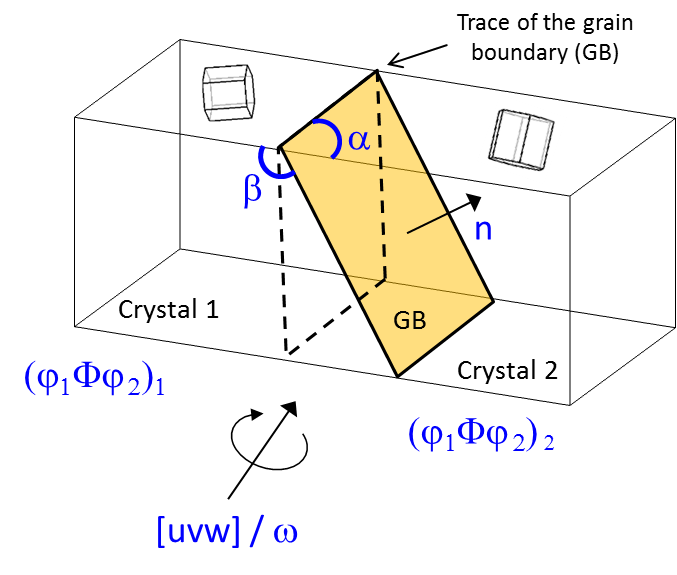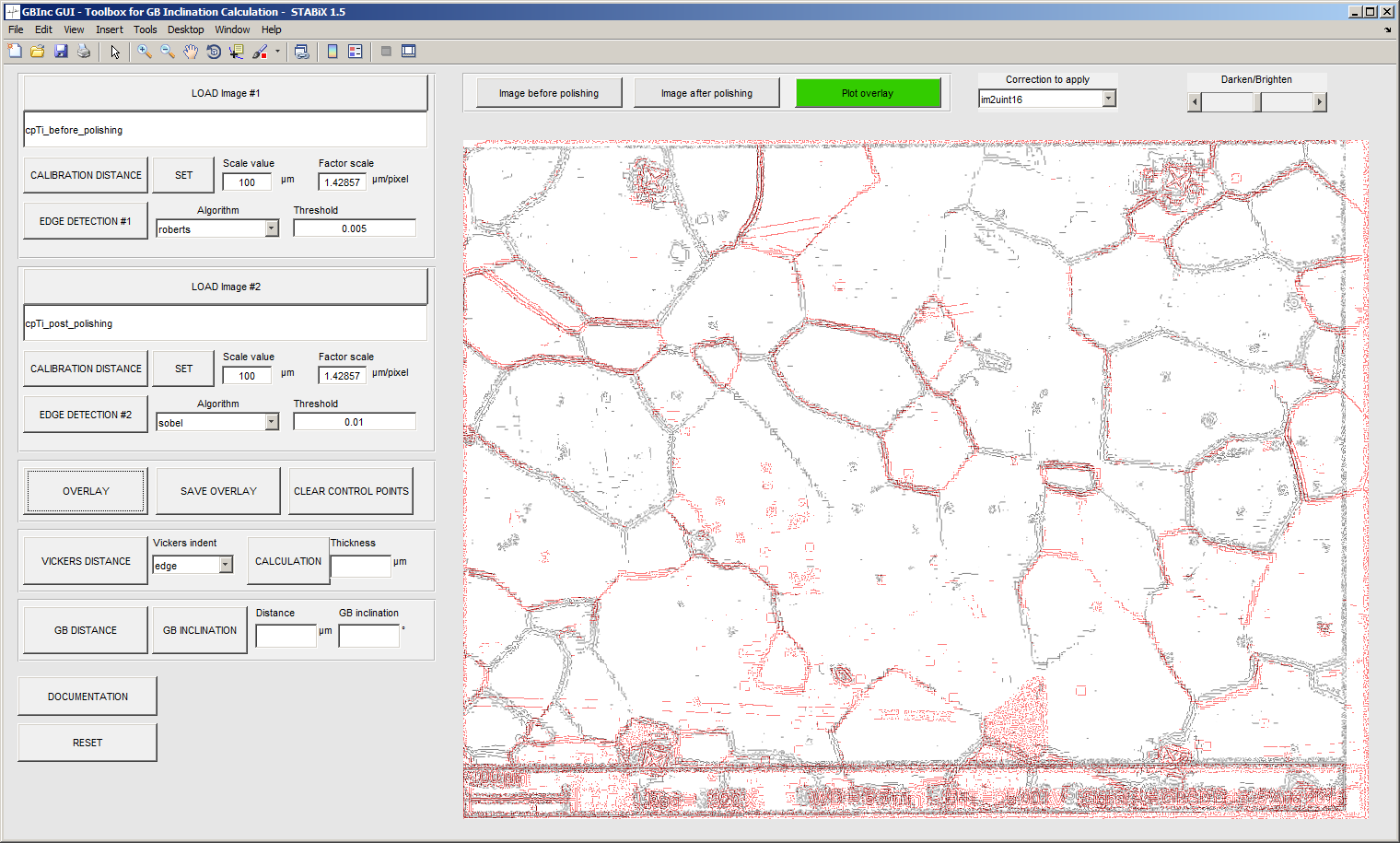Bicrystal Definition¶
Crystallographic properties of a bicrystal¶
A bicrystal is formed by two adjacent crystals separated by a grain boundary.
- Five macroscopic degrees of freedom are required to characterize a grain boundary [3], [5], [6] and [7] :
3 for the rotation between the two crystals;
2 for the orientation of the grain boundary plane defined by its normal \(n\).
The rotation between the two crystals is defined by the rotation angle \(\omega\) and the rotation axis common to both crystals \([uvw]\).
Using orientation matrix of both crystals obtained by EBSD measurements, the misorientation or disorientation matrix \((\Delta g)\) or \((\Delta g_\text{d})\) is calculated [4] and [2] :
Disorientation describes the misorientation with the smallest possible rotation angle and \(CS\) denotes one of the symmetry operators for the material [1].
The Matlab function used to set the symmetry operators is : sym_operators.m
The orientation matrix \(g\) of a crystal is calculated from the Euler angles (\(\phi_{1}\), \(\Phi\), \(\phi_{2}\)) using the following equation :
(3)¶\[\begin{split}g = \begin{pmatrix} \cos(\phi_{1})\cos(\phi_{2})-\sin(\phi_{1})\sin(\phi_{2})\cos(\Phi) & \sin(\phi_{1})\cos(\phi_{2})+\cos(\phi_{1})\sin(\phi_{2})\cos(\Phi) & \sin(\phi_{2})\sin(\Phi) \\ -\cos(\phi_{1})\sin(\phi_{2})-\sin(\phi_{1})\cos(\phi_{2})\cos(\Phi) & -\sin(\phi_{1})\sin(\phi_{2})+\cos(\phi_{1})\cos(\phi_{2})\cos(\Phi) & \cos(\phi_{2})\sin(\Phi) \\ \sin(\phi_{1})\sin(\Phi) & -\cos(\phi_{1})\sin(\Phi) & \cos(\Phi) \\ \end{pmatrix}\end{split}\]
The orientation of a crystal (Euler angles) can be determined via electron backscatter diffraction (EBSD) measurement or via transmission electron microscopy (TEM).
The Matlab function used to generate random Euler angles is : randBunges.m
The Matlab function used to calculate the orientation matrix from Euler angles is : eulers2g.m
The Matlab function used to calculate Euler angles from the orientation matrix is : g2eulers.m
Then, from this misorientation matrix (\(\Delta g\)), the rotation angle (\(\omega\)) and the rotation axis \([u, v, w]\) can be obtained by the following equations :
The Matlab function used to calculate the misorientation angle is : misorientation.m
The grain boundary plane normal \(n\) can be determined knowing the grain boundary trace angle \(\alpha\) and the grain boundary inclination \(\beta\).
The grain boundary trace angle is obtained through the EBSD measurements (grain boundary endpoints coordinates) and the grain boundary inclination can be assessed by a serial polishing (chemical-mechanical polishing or FIB sectioning), either parallel or perpendicular to the surface of the sample (see Figure 5).

Figure 4 Schematic of a bicrystal.¶

Figure 5 Screenshot of the Matlab GUI used to calculate grain boundary inclination.¶